Specifications:
- Mid Size 2 Way Monitor
- Drive Units HF 19 mm soft dome, ferrofluid cooled
- Drive Units LF 200 mm polypropylene cone, 40 mm coil
- Frequency Response 60 Hz to 20 kHz ± 3 dB Pair Matching Within 1 dB
- Impedance nominal 8 ohms
- Crossover point 3 kHz
- Power handling 100 Watts
- Dimensions H x W x D 545 mm x 275 mm x 325 mm
- Cabinet weight 14.3 kg
- Price: $3800
In my search for tube friendly speakers for my Leben CS-600, I reviewed the Vandersteen 1C last month. The Vandersteen was the fifth pair of speakers I’d tried over the last year to date since purchasing the CS-600. While the Vandersteen 1C were the best pair thus far, they ultimately had one fatal flaw. They were consistently unable to involve me in the music. In hindsight, I think the Vandersteen really prefer more power than 30 tube watts, and higher damping factor solid state ones at that. Consequently, I continued my search by purchasing a used pair of Spendor SP2/3e.
Background
Spendor was founded in the 1960’s by Spencer Hughes and his wife, Dorothy to make broadcast monitor loudspeakers based on Spencer’s earlier work in the BBC sound engineering department. One of Spencer’s co-workers at the BBC was Dudley Harwood, who went on to found Harwood. Spendor is now owned by Philip Swift (of Audiolab fame), who brought the more “modern” S series to market. The SP2/3e is the mid-sized monitor in their Classic line, now called Classic R after a recent update. Classic is appropriate since these models are direct descendants the original designs. Spencer Hughes and Dudley Harwood did much of the early work into the use of polypropylene as a woofer cone material while at the BBC. Polypropylene has been used exclusively by Spendor and Harbeth since.
The SP2/3e is a simple two-way bass reflex in a now unfashionably large enclosure. Like the Vandersteen 1C reviewed last month, the SP2/3e design is an example of “form follows function.” For a given set of drivers, a larger cabinet and baffle generally provide greater sensitivity a smoother response. The tweeter is made by Scanspeak and has a 3/4″ textile dome, a felt surround and a slight horn loading. The midbass is made in-house by Spendor. It has an 8″ translucent, doped polypropylene cone with a soft dust cap. Below the midbass driver is a large reflex port. The SP2/3e is the direct descendant of the original BC2 from 1973. The “e” suffix was added in 1994 to denote a few minor improvements like OFC internal wiring, gold-plated binding posts and beveling of the cabinet edges.
Like all models in the Classic Series, the SP2/3e remains true to the original design protocols that Spencer Hughes was involved in at the BBC. These protocols are based on psychoacoustic research and include: a neutral tonal balance, cabinet construction push resonances down away from the critical midrange, and the so-called “BBC dip”, an intention response trough in the 1-4 KHz “presence” region to offset the ear’s natural elevated sensitivity there. As seen in the Fletcher-Munson loudness curves, the BBC dip appears well justified.
The fit, finish and veneering are excellent. The biwireable binding posts are mounted individually through the rear panel and the drivers are flush-mounted. The cabinets are constructed as a thin-walled MDF substrate damped with carefully-placed bituminous pads. My pair, which I bought in used but perfect condition, is in a limited edition satin birdseye maple.
Referring to the measurement section in the June, 2004 Hi Fi Choice review, the SP2/3e is true to its 88 dB / watt sensitivity rating at a measured 88.4 dB/watt. Though rated at 8 ohms, the measured average impedance is actually a very high 18.5 ohms (the implications of this I’ll discuss further). As befits their monitor heritage, the overall measured distortion is also very low, even at rather high output levels.
In addition to tube friendliness, the Spendor Classics have gathered the reputation for sounding warm, dull, even boring. I find this as much an indictment of the typical voicing of contemporary speakers, most of which sound too lean, bright and fatiguing to me. I suspect there is a second reason for this reputation. Intriguing comments were made by Bob Neil in his www.enjoythemusic.com review of the Spendor SP1/2e:
“(The SP1/2e) is a very different loudspeaker on push-pull tubes than it is on hybrid with its solidstate output. I will go into this a little further in the music listening tests, but let me just say here that with the (Audiomat) Solfege amp, the SP 1/2’s trade a great deal of their refinement and ease for a heavy shot of testosterone.”
Mr. Neil goes on to say,
“…there is clearly something about the SP 1/2’s low-end in particular that is very responsive to push-pull tubes. And the responsiveness, at least with the high current Solfege, though it appears to begin in the mid and upper bass, runs well up into the midrange.”
Because the Spendor Classics share design elements, it’s a safe to say Mr. Neil was hearing the effects of that high average impedance. Whereas solid state amplifiers generally sound best driving moderate to lower impedances, tube amplifiers are the exact opposite. They love higher impedances. The legendary LS3/5a, in spite of its 82 dB/watt sensitivity, works fabulously with low power tube amplifiers like the 15 wpc Quad II, but not well at all with most high-powered solid state amplifiers. Since the Spendor Classic series designs date back to the late 1960’s and early 1970’s, I suspect they were designed for, and voiced with tube amplification. A loudspeaker with a high average impedance curve certainly wouldn’t flatter a solid state amplifier. Bob Neil reached the opposite conclusion in his SP1/2e review and I’ve never seen this confirmed anywhere else. However, it is a logical assumption, especially after listening to them driven by my tube amplifier.
Spendor SP2/3e review
System & Setup
My amplifier is a Leben CS-600 integrated tube amplifier. The front end is a 47 Labs Shigaraki transport and DAC. Cables consist of Cardas Twinlink speaker cables, a Cardas Microtwin interconnect, a Cablepro Vista digital cable (custom terminated with Eichmann RCA’s), a Zu Birth power cord for the Leben, and Naim power cords for the transport and DAC. The equipment rack is a Yamamoto OS92. The system is powered from a dedicated AC line terminated with a Pass and Seymour AC receptacle. A non-filtering Cablepro Revelation II power strip distributes AC. The listening room is 13′ wide and 15′ long and is acoustically treated.
For the SP2/3e I purchased Tyler Acoustics Model 1 speaker stands in 16″ high. These are $300 per pair. They are made from 1” thick mdf and are sand-fillable. The 16″ height was determined from my measured sitting ear height, always an important requirement with stand-mount speakers. The optimal listening axis for the SP2/3e seemed to be between the tweeter and woofer, though this doesn’t seem too critical. The normal listening height at the level of the tweeter is about equally acceptable and provides a bit more air and resolution. I ended up filling the stands half full with sand (since fully loaded seemed overkill). I used tiny amounts of blu-tak at the corners to couple the speakers to the stands.
I use a shortlist of familiar recordings for evaluation purposes. These recordings range in from audiophile quality to mediocre, even horrible. Most are in the mediocre range, my justification being that an audio system should sound enjoyable and non-fatiguing regardless the genre or the quality of the recording. I listen primarily to rock, jazz and classical, in that order.
After a few experiments, I placed the SP2/3e in my standard speaker location: 3′ from the front wall, 3.5′ from side walls. This left 6′ between the speakers and 8′ to the listening position, which worked best for the Vandersteen 1C reviewed last month as well. In spite of the front porting, my experiments proved that the Spendor SP2 3e needed plenty of free space around them in my room. As with every bi-wireable speaker I’ve owned, I immediately replaced the stock jumpers with Cardas magic jumpers. Bi-wiring is apparently irrelevant with these speakers anyway. An online forum query from other owners was overwhelmingly in favor of single wiring over bi-wiring. The SP2/3e sounded best from the 8 ohm tap of the CS-600 and firing straight ahead rather than toed in.
Listening Spendor SP2/3e
Unquestionably, the SP2/3e has synergy with my Leben CS-600, which is to say, they thrive on tube amplification, even low powered ones. I have heard of people driving these with singeended triode amplifiers. They are anything but laid back, dull and boring. And while there is an added warmth and a slight smoothing of transients (noticeable on guitar strings and vocal sibilance, for example), it’s natural rather than euphonic.
Befitting its monitoring heritage, the midrange is neutral, transparent and slightly forward. They also have a natural ease and relaxed quality,
and distortion seems very low. This forwardness may be what led Bob Neil to comment on a lack of refinement when he drove the SP1/2e with tubes. As I am accustomed a more forward, “flat earth” presentation, I don’t consider the SP2/3e unrefined. I find them engaging rather than ingratiating, and listening fatigue is all but nonexistent.
Their non-prejudicial nature is also noteworthy. Unlike many speakers, they do not favor any particular genre. Whether it’s loud amplified rock or delicate strings, everything is catered to equally. They play well at lower volumes without sounding too lean. They also go plenty loud for my tastes without strain, unlike other smaller speakers I’ve owned. Finally, because of their natural warmth, they are forgiving of bad recordings, more so than the Vandersteen 1C in fact. My acid test here, early Radiohead, was tolerable rather than the dry, sterile mess it’s typically been on other speakers I’ve owned.
Vocals, while not the equal to my personal standard, the Harbeth HL-P3ES-2, are very lifelike and sibilance is very smooth and natural, perhaps too smooth. The bass region is rich but adequately tuneful and resolved. The treble region is grain-free, smooth and slightly golden. Dynamics are strong. Finally, imaging is perfectly adequate. Images do not crowd around the location of the loudspeakers and there is a good sense of separation, width, depth and body.
In direct comparison to the Vandersteen 1C reviewed last month, the two speakers have a similar relaxed and forgiving demeanor. Neither have major sins of commission. The SP2/3e isn’t as extended in the bass, nor does it image quite as well. But the SP2/3e is slightly smoother and fuller. It also has better tonality, resolution, timing and transparency. Thus, taking nothing away from the 1C, which I really like, the SP2/3e is much more organic, involving, and enjoyable in my system. With solid state amplification there may have been a different outcome. An important corollary: while the 1C will grow with system upgrades, I feel that the SP2/3e will grow further. In fact, I don’t think the SP2/3e can ever be outclassed upstream.
There are three caveats worth noting. First, while I like the slightly forward presentation, sometimes I’m in the mood for less drama and engagement. Second, the bass tuning took some work to integrate. It was initially too full for my tastes. I mitigated it through tube rolling, although cable rolling would have also worked. I suspect this bass bloom is at least partially a byproduct of the cabinet design since they are pretty lively while music is playing. I agree with this design decision, though, since it’s said to provide a cleaner midrange and did not add chestiness to male voices. Finally, in light of the high average impedance and Bob Neil’s SP1/2e review comments, they may sound very differently driven by solid state amplification than tubes. I plan on reviewing a solid state integrated amplifier at some point to assess this.
Final Thoughts
The SP2/3e are not audiophile speakers by contemporary standards, either sonically or appearance-wise. They are not strictly neutral, and there are many speakers that provide superior resolution and extension at the frequency extremes. Many will find them too warm, polite and physically bulky. However, in spite of all this, they possess a certain self-affacing grace and charm in my system that makes all of this irrelevant to me. I personally like the appearance, too. I have ended my search with these speakers. And when I do upgrade, the similar but larger SP1/2 and SP100 in the Classic series will be on my shortlist.
The original MSRP of the SP2/3e was in the $1800-2000 range. Unfortunately, due to the current weakness of the American dollar, the price for the current SP2/3R is now $3500, which I don’t consider affordable. However, for those whose preferences lean retro (sonically and appearance-wise), the $1500 used market value for the SP2/3e a serious bargain, particularly if tube amplification is involved.
from affordableaudio, By Greg Johnson
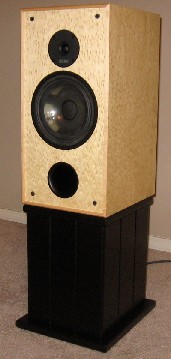
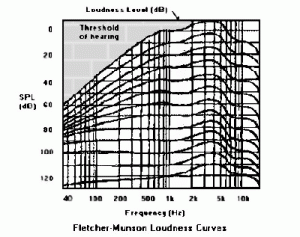
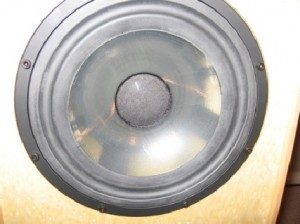
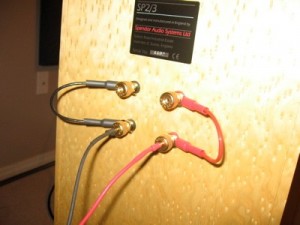
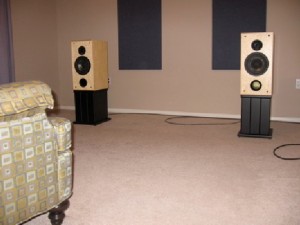
Hi Greg,
Great review. Could you please confirm which tubes you were using in your CS600 for this review to bring the bass under control as mentioned?
Thanks